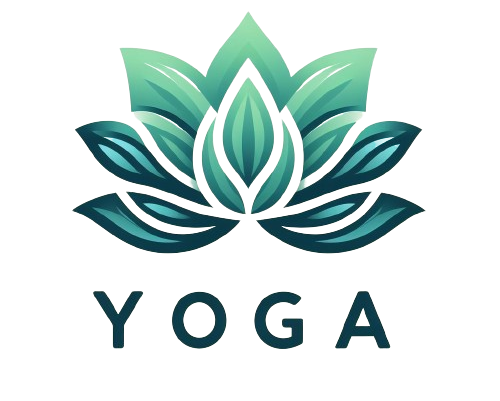Hey ! Let’s talk about a killer combo that might not seem obvious at first: yoga and running. Sounds a bit like mixing oil and water, doesn’t it? But trust me, integrating these two can skyrocket your running game to levels you’ve never dreamed of.
Why Yoga Deserves a Spot in Your Running Routine

You’re probably wondering, “Why yoga?” I get it, running is all about that adrenaline rush, the speed, covering distances. Yoga, on the other hand, seems calm, stationary, and… well, different. But here lies the magic. Yoga stretches muscles that runners often neglect, improves your breathing technique, and enhances your mental focus. Plus, it’s a great way to cool down after a hard run. Still with me? Good.
First up, and probably the most obvious, is the flexibility and strength you gain from yoga. We’re talking about muscles like your hamstrings, hip flexors, and calves—all crucial for runners. Yoga poses, or asanas, target these areas, helping reduce the risk of injuries by improving muscle elasticity and joint mobility.
Ever find yourself gasping for air on a tough uphill? Yoga can help with that. It teaches you how to control your breathing, allowing for better oxygen exchange. Deep, mindful breaths can make a huge difference in your running endurance and performance.
The focus and mindfulness gained through regular yoga practice can give you a mental edge. Running, especially those long-distances, is as much a mental challenge as it is physical. Yoga teaches you to stay present, push through discomfort, and maintain a positive, can-do attitude.
Integrating Yoga into Your Running Schedule
Now, you’re probably asking, “How can I squeeze yoga into my already packed schedule?” Worry not. It’s about quality, not quantity. Even adding a short yoga session two to three times a week can make a world of difference. Here’s how to start:
Begin with 20-minute sessions focusing on key areas for runners. Look for poses that enhance hip flexibility, strengthen your core, and improve your balance. Include a mix of dynamic movements to warm up and static poses to improve flexibility.
Consider doing a brief yoga session after your run when your muscles are still warm. This can be an ideal time to stretch, helping to reduce muscle soreness and speed up recovery.
Using your days off from running to engage in a more extensive yoga practice is also beneficial. On these days, you can focus on longer holds and deeper stretches, providing your body the recovery it needs to hit the ground running, quite literally, on your next run.
Must-Try Yoga Poses for Runners
Yoga poses can be exceptional companions for runners, offering benefits that enhance performance, aid in recovery, and prevent injury. Each of these recommended poses targets areas that often become tight or fatigued through the repetitive motions of running.
Starting with the Downward Dog, this pose is fantastic for stretching the calves, hamstrings, and back—areas that can become particularly tight in runners. By alleviating tension in these areas, runners can enjoy longer strides and a reduced risk of injury.
Moving on to Lunge Variations, these are excellent for stretching the hip flexors, which can become tight from the constant forward motion of running, and for strengthening the legs. Stronger legs mean more power and endurance on your runs, making these variations an essential part of a runner’s yoga routine.
The Pigeon Pose is another must-try, especially for those looking to prevent IT band syndrome, a common issue that can sideline runners. By deeply opening the hips, this pose helps to alleviate tension in the IT band, promoting better alignment and preventing pain.
Bridge Pose is targeted more to strengthening rather than stretching. By focusing on the lower back, glutes, and hamstrings, it builds a strong foundation that can improve running posture and power. This strength is vital for a smooth, efficient running form.
The Legs Up the Wall pose is perfect for recovery days. By helping to drain lactic acid from tired legs, it speeds up recovery, reduces soreness, and prepares the body for its next run.
Feel free to mix and match these poses based on your needs and how your body feels. Integrating them into your routine can make a significant difference in your running performance, recovery, and overall enjoyment of the sport. By listening to your body and responding with appropriate yoga poses, you can maintain a healthy, balanced approach to running that supports both your physical and mental well-being.
Starting Your Yoga Journey
Beginning a yoga journey can initially appear challenging, especially for those who may not feel flexible or are new to the practice. However, embarking on this path can significantly enhance overall well-being, flexibility, and mental health. To ease into your yoga practice, consider starting by exploring classes specifically designed for your needs and interests. Many yoga studios offer sessions aimed at athletes or individuals who engage in regular running, providing tailored routines that address common tight areas and improve flexibility and strength in muscle groups most utilized in such activities. These classes cater to your physical requirements and present an excellent opportunity to connect with like-minded individuals who share your passion for activity and wellness. This community aspect can be incredibly motivating and supportive as you navigate the early stages of your yoga journey.
In addition to in-person classes, the digital world offers an abundance of resources for beginners. Platforms like YouTube feature numerous yoga instructors who have created series specifically designed for runners and athletes. These online resources can be particularly beneficial as they allow you to practice in the comfort and privacy of your home, enabling you to move at your own pace without feeling self-conscious about your starting point or how you compare to others. This way, you can focus entirely on your personal growth and listen intently to what your body needs each day.
As with any new endeavor, it’s important to start slow and with patience. Yoga is not about competition or proving your flexibility. It’s a personal journey of self-discovery, physical improvement, and mental relaxation. Listening to your body is important; pushing yourself too hard too soon can lead to discouragement or, worse, injury. Flexibility and strength will come with time, and it’s perfectly okay if you can’t touch your toes right away or if certain poses seem out of reach at the beginning. What’s important is your commitment to showing up on the mat, exploring your limits gently, and respecting your body’s signals. By approaching yoga with an open mind and a gentle spirit, you’ll find the practice to be a rewarding addition to your life, enhancing not just your physical fitness and bringing a sense of calm and centeredness to your daily routine.
